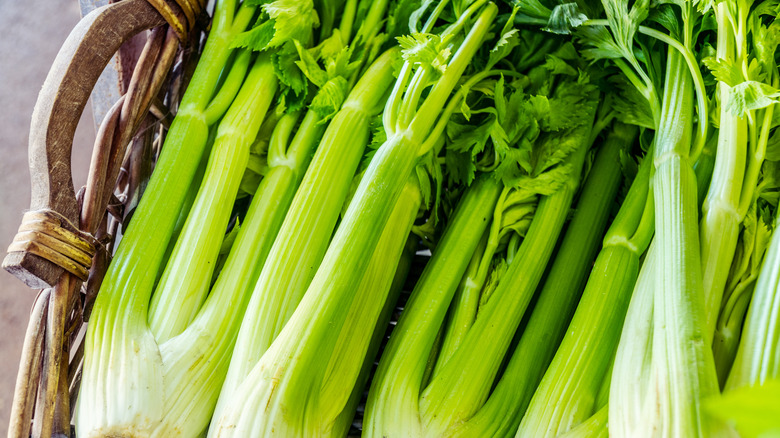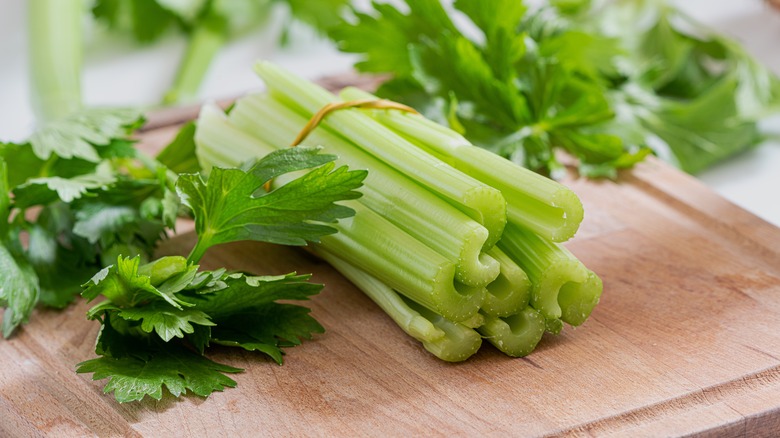What You Should Do Before Putting Stalky Veggies In The Fridge
Whether it's your celery, rhubarb, fennel, or chard, some of those stalky vegetables can go soft in a matter of days if you fail to store them properly (via Metro). This can be especially frustrating when you are all ready to cook, but in looking in the refrigerator to retrieve your fresh ingredients, find a batch of wilted vegetables staring back at you. At that point, you're left with a few choices: creatively pivot like the home chef you are and find a suitable substitute ingredient, order delivery from your neighborhood go-to, or do what you were hoping not to do — make yet another trip to the grocery store during the busy work-week.
It's a sad but all too common story — one that easily could've been avoided should you have known how to store your stalk vegetables correctly. Luckily, the methods for storing your stalky veggies are simple. And, they'll take much less time to execute than it would for you to run to the market.
Chop the tops
As Kitchn explains, when putting your fresh produce away, take the time to separate the stalks from their leafy sections can add days or even weeks to their storage time and prevent them from quickly wilting and shriveling. The New York Times backs up this claim, saying that produce like carrots, beets, or turnips, can remain fresh for weeks if cut down to the root and put in an airtight container or zip-lock bag inside your refrigerator. This is because the leafy tops actually suck moisture from the plant's roots (the part you eat) even after they're picked.
Now, if that's too hard to remember, fall back on the rhyme: Chop the top. With it, your vegetables, bank account, and self-esteem will thank you — not only for all the nutrients that stalk vegetables are rich in (per Metro) — but also for the limited Uber Eats orders and late-night shopping runs.

